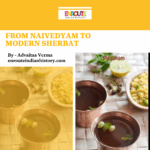Revisiting Childhood: Bengalis and their Obsession with Horror
- EIH User
- November 2, 2023
Fear is a response to an unpleasant situation when we become aware of an incoming danger. Fear can be set on anything – one can fear death, one can fear darkness, one can even fear social interaction. Fear of the dead or fear of supernatural beings is one thing that unites humankind as from time immemorial through various means we have tried to connect with the supernatural and wonder of the other realms. People throughout the globe get involved in miscellaneous practices to ward off evil like the celebration of Halloween in the Western world or the practice of lighting fourteen ‘diyas’(baked clay cups) during ‘Bhoot Chaturdashi’ in Bengal. This inherent human emotion has also found its place in the narrative of horror especially among children. Indian horror’s popularity is mostly found in the eastern region of India which is in the Bengal and Assam region. In Bengal, horror and childhood go hand in hand as horror stories hold a crucial spot during bedtime in every Bengali household.
Horror: A Medicine for a Good Life and Good Sleep

Bedtime stories: An integral part of Childhood.
We live in a world that is not always kind to us. As adults, we may know the difference between good and evil however it is difficult for a child to distinguish such traits. Hence, storytelling becomes a medium for ensuring the safety of an individual themselves as well as providing them with problem-solving skills. A lesser-known fact about Bengal is their active participation in the tradition of bedtime stories where chronicles on ghosts take center stage. The childhood of a Bengali is filled with accounts of horrors passed down from their grandparents where they themselves have witnessed supernatural activities. Such popularity of horror in Bengal is due to its long association with tantrism which gradually led to the development of these horror narratives. The popularity of these horror stories also lies in the fact of a Bengali’s obsession with the continuation of the past. The Bengali connotation of the word ghost is ‘bhoot’ which is an alternative to the word past, hence through these stories not only the older generation teach the newer generation important life skills but also keep a part of themselves alive among their children and grandchildren.

‘Sakhchurnis’ – the married female ghost.
Bengali ghosts are very different from other ghosts due to their huge appetite for fish, being mischievous and finally, they cannot stand the smell of turmeric. The folklore of Bengal has categorized the Bengali ghosts based on their physical features, caste, gender, and so on. The most popular is the ‘Brahmadaitya’, the ghost of a deceased Brahmin due to their high social are often considered pious and benevolent. Mrs. Lila Sarkar, now 79 years old, provides an interesting testimonial of a cousin of hers encountering a ‘Brahmadaitya’ who helped him(cousin) find his way back home when he got lost in a local fair as a young child. ‘Petnis’ and ‘Sakhchurnis’ come next in the popularity pyramid where the former is an unmarried female ghost and the latter is a married female ghost, these ghosts are known to possess the female bodies to relive their unfulfilled desires. The ‘Damori’ is another category who are associated with tantrism and are known to possess black magic, the ‘Mecho-bhoot’ are fisherman ghosts who are known for their huge appetite for fish, then there is the headless ghost known as ‘Skondhokatas’ and the list goes on and on.
Horror and its mark in Literature, Television and Movies:

An audio cover of Thakurmar Jhuli. A musical adaptation of famed Bengali fairy tales, originally compiled from the traditional by Dakshinaranjan Mitra Majumdar. Part of Bengali heritage, transcending time.
With the advent of paper technology, these folklores began to be penned down. The first literary account we can get is that of Lal Bihari Dey in his work ‘Folk Tales of Bengal’ where he put together the popular Bengali Folk-tales. Here he discusses how during the adolescent period these stories were an important part of every Bengali household. Horror has also found its place in children’s literature where a tone of satire is included to be readable to the young audience. Bibhutibhushan Bandhopadhyay, famous for his work ‘Pather Panchali’(a movie adaptation was made by Satyajit Ray) has also written stories about supernatural activities like ‘Taranath Tantrik’, an astrologer who through his travel across Bengal encounters many paranormal activities. The lifetime Oscar award-winning director Satyajit Ray is quite famous in Bengal for his contribution to Children’s Literature. His work ‘Tarini Khuro’(Respected Uncle Tarini) deals with the experiences of the protagonist with supernatural entities. Ishwar Chandra Vidyasagar, known for his pioneering contribution to the Widow Remarriage movement is also famous for his work ‘Betaal Ponchobimsoti’(25 tales of Betal) is a collection of twenty-five stories through a dialogue between King Vikramaditya, the emperor of Ujjain and a demonic being Betaal. The most popular children’s classic is ‘Thakurmar Jhuli’(Grandmother’s Bag of Tales) by Dakshinaranjan Majumder which is also a collection of popular folk tales from Bengal. This book’s introduction was given by the Nobel Laurette Rabindranath Tagore who encouraged the publication of such indigenous works that would enable the people to be in touch with their rich culture.
The coming of the media and entertainment industry led to the adaptation of this literature into cartoon series or movie adaptations. The cartoon adaptation of ‘Thakurmar Jhuli’ and ‘Betaal Ponchobimsoti’ are cult classics; testimonials can be found about how Bengalis during their younger days had to give up on their studies just to watch these amazing spooky cartoon series as well as face the repercussions (scoldings from parents). Modern writers like Shirsendu Mukhopadhyay have provided a completely different outlook by adding humor and morality to these ghost stories. The ghosts represent the savior of society fighting the evil forces off hence taking a different path from the previous narrative of ghosts being the omnipotent evil. The movie adaptations of Shirsendu Mukhopadhyay’s works like ‘Gosai Baganer Bhoot’(The Ghost in the Gosai Gardens) and ‘Goynar Baksho’(Box of Jewelry) are popular not only among the younger public but also among the adults who through these movies have a trip down the memory lane.
Horror: Still going on
The tradition of horror storytelling is a continuing tradition among the Bengalis. However, the youth of today’s generation are questioning the very foundation of the concept of evil in these stories. Revisiting these childhood classics, they provide a different narrative of these horror characters. For instance, the ‘Sakhchurnis’ and ‘Petnis’ are now seen from the perspective of challenging patriarchal norms of the society. Even though the narratives might change with time, the emotion behind the continuity of this storytelling tradition is still going on in Bengal. The evidence lies in these varying narratives and the adaptation of these story tales in different forms of median. Hence, this shows how horror is going to be a never-ending affair for Bengalis and is definitely going to be passed down to future generations.
Picture Reference:
2.https://s01.sgp1.cdn.digitaloceanspaces.com/inline/usncgzdpfk-1666871929.jpg
3.https://s01.sgp1.cdn.digitaloceanspaces.com/book/181944-qdsuhvivnr-1666871878.jpg
Bibliography:
- Allen, Paul Goat, ‘5 Reasons Horror in Children’s Literature is a Good Thing’, Barnes and Noble, April 29, 2013.
- Redd, Dani, ‘Ghostly Bengali Legends: The Most Famous Bhoots in Local Folklore’, Culturetrip, January 16, 2020.
- November 2, 2023
- 12 Min Read
- November 2, 2023
- 6 Min Read
- November 2, 2023
- 7 Min Read
- November 1, 2023
- 8 Min Read
- November 1, 2023
- 6 Min Read
- October 30, 2023
- 9 Min Read

















